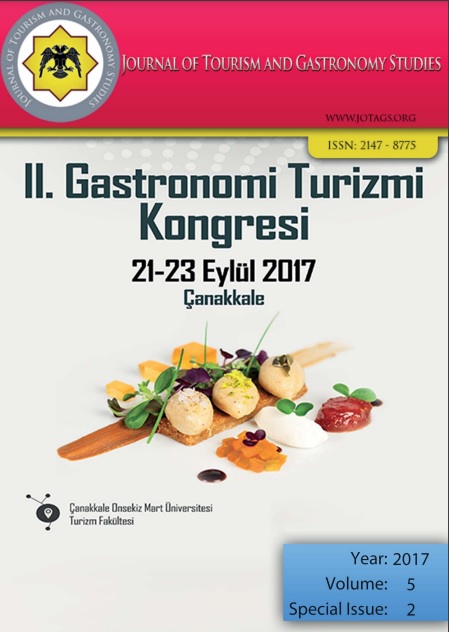Risk Factors and Hygiene Importance in Food Safety
Keywords:
Food, Food safety, Risk, Hygiene, HACCPAbstract
Parallel to the world population, food needs are also increasing. In order to meet this increasing need, the agricultural areas supported by chemical feeders are transformed into mine fields in order to maximize the unit area. The food safety concept is the foreground of food-borne illnesses, increasing consumer awareness along with increasing income levels, the preference of more natural or near-natural products, and the reflection of a number of injurious factors in the production and consumption process. Food, the basic substance of our lives, can become a dangerous hazard for our health by becoming harmful because of insufficient food safety during the steps from the farm to the fork. In this study, which emphasizes the importance of hygiene as an antiserum, what are the increasing risk factors in food security which becomes more and more important day by
day, the concepts of food safety, physiological, biological and chemical risk factors, hygiene are explained; the ways to provide food hygiene and the things to be done to the consumer as the primary producer.
References
Bulduk, S. (2006). Gıda ve Personel Hijyeni. Ankara: Detay Yayıncılık.
Buzbaş, N., (2010). Türkiye ve AB’de Gıda Güvenliği: Ortaklığın Sinerjisi 28.Türkiye-AB Karma İstişare Komitesi Toplantısı Edinburg, İskoçya.
Demirağ, K., Yılmaz H., (2009). Gıda Güvenliği, Sürdürülebilirliği ve Yerel Yönetimler. TMMOB İzmir Kent Sempozyumu, 647-656, İzmir.
Erbaş, M. ve Arslan, S., (2015). Açlığın Önlenmesi ve Gıda Güvencesinin Sağlanması. Gıda Mühendisliği Dergisi, 36:4.
Erkmen, O., (2010). Gıda Kaynaklı Tehlikeler ve Güvenli Gıda Üretimi. Çocuk Sağlığı ve Hastalıkları Dergisi, 53: 220- 235.
Giray, H. ve Soysal, A., (2007). Türkiye’de Gıda Güvenliği ve Mevzuatı. TSK Koruyucu Hekimlik Bülteni, 6(6):485- 490.
Girgin, G. K.; (2008) Haccp Sisteminin Otel İşletmeleri Açısından Değerlendirilmesi: 5 Yıldızlı Otel İşletmelerinde Bir Uygulama, (Yayınlanmamış Yüksek Lisans Tezi), Balıkesir Üniversitesi, Sosyal Bilimler Enstitüsü, Turizm İşletmeciliği Anabilim Dalı, Balıkesir.
İlbeği, İ.; (2004)“Gıda Güvenliği ve Tüketicinin Korunması”, Gıda Mühendisliği Dergisi, http://www.gidamo.org.tr/yayinlar/dergi_goster.php?kodu=18&dergi (Erişim 11 Kasım 2015).
Karabat, S., Atış, E., (2015). An analysis of relationship between food safety and pesticides usages of grape growers in Manisa province. BIO Web of Conferences 5, 04005: 2
Kinsey, J., (2005). Food Safety in Three Dimensions: Safety, Diet Quality, and Bio-Security. CHOICES, 4th Quarter, 20(4): 269
Resmi Gazete, (2008). Tanımlar, 4. Madde Gıda Güvenliği, Erişim Tarihi:09.07.2017, http://resmigazete.gov.tr/eskiler/2008/09/20080926-4.htm
Tayar, Mustafa, (2007) “AB Uyum Sürecinde Türkiye’de Gıda Güvenliği Sorunu” Kriter Dergisi, Nisan, (Erişim 10 Kasım 2015). http://www.abveteriner.org/dosyalar/mtayar.pdf
Topuzoğlu, A., Hıdıroğlu, S., Ay, P., Önsüz, F. ve İkiışık, H., (2007). “Tüketicilerin Gıda Ürünleri İle İlgili Bilgi Düzeyleri ve Sağlık Risklerine Karşı Tutumları”, TSK Koruyucu Hekimlik Bülteni, 6(4): 253-258.
WHO, (2003). Assuring Food Safety and Quality: Guidelines For Strengtheing National Food Control Systems, Joint FAO/WHO Publication, FAO Food and Nitrition Paper, 73 :10-12
Downloads
Published
How to Cite
Issue
Section
License
Copyright (c) 2023 Journal of Tourism & Gastronomy Studies

This work is licensed under a Creative Commons Attribution-NonCommercial 4.0 International License.








